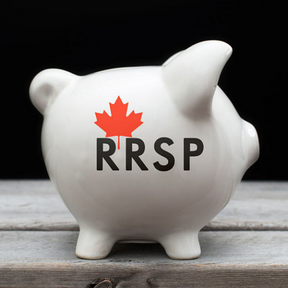
Getting retirement income from your RRSP
As you approach retirement age, it’s important to understand the sources of income available to support your retirement objectives. One of the most important is the Registered Retirement Savings Plan (RRSP).
Registered Retirement Savings Plans
Like many Canadians, you probably have investments within an RRSP that you have built up over the years. Now, as retirement approaches, you may want to start withdrawing that money. What follows is some clarity about the issues involved.
You may access your RRSP savings at any time, but under current tax law you may keep the RRSP money tax sheltered only until the end of the year in which you turn 71. Once you withdraw any funds from the plan, they will be fully taxed. With personal RRSPs you have four choices:
- Withdraw the funds
- Purchase a Registered Annuity
- Transfer the funds into a Registered Retirement Income Fund (RRIF)
- Pooled Registered Pension Plan (PRPP)
When you made your RRSP contributions you received a tax deduction. Income earned and gains made inside the RRSP were tax sheltered. Therefore, the monies in the RRSP have never been taxed, which means that any withdrawals are fully taxed as income in the year they are received. Given this fact, it is usually not recommended to start receiving the funds until you need them.
You can use the funds inside your RRSP to purchase an annuity from a licensed insurance representative. You will then receive a steady stream of guaranteed payments over time, on which you will have to pay tax. The amount you receive from your annuity is based on prevailing interest rates at your time of purchase, and the features of the particular type of annuity you choose.
You can transfer your RRSP assets into a RRIF. The difference between these two accounts is that RRSPs are designed to build up funds while RRIFs are designed to pay funds out. RRIFs look just like RRSPs from an investment perspective, with the same flexibility of investment choices. When you establish a RRIF you will be required under tax law to withdraw a minimum amount each year.
This amount will be included in your income for tax purposes. There is no maximum withdrawal limit on an RRIF, so you can take out as much as you need, provided you are prepared to pay the resulting tax. The younger you are when you establish the RRIF, the lower the minimum withdrawals will be.
The Federal government recently introduced the Pooled Registered Pension Plan (PRPP), a new kind of deferred income plan designed to provide retirement income for employees and self-employed individuals who do not have access to a workplace pension. Because individuals’ assets will be pooled, the PRPP will offer investment and savings opportunities at lower administration costs.
An individual can be enrolled in a PRPP by his or her employer, if the employer chooses to participate in the plan. A self-employed individual and an individual whose employer chooses not to participate can open a PRPP account by approaching a PRPP administrator directly. Investment options in a PRPP are similar to those available in a registered pension plan.
Non-registered assets
The main difference between registered (RRSPs and RRIFs for example) and non-registered funds is taxation. All income received from a registered plan is fully taxed as income at your marginal tax rate. The taxation of non-registered investments depends on the type of income earned. Capital gains, dividends and interest are all taxed differently and will have implications for your income and investment decisions.
In offering this overview of RRSPs, it’s important to note that integrating your potential pension income streams is an issue that needs discussion with a knowledgeable professional so talk to your financial advisor.
Let’s talk! Book an appointment with me 250-787-0365

Christina Clarance, Wealth Advisor at North Peace Savings and Credit Union.
Fort St. John is a community that Christina and her family are proud to call home. Having lived in Fort St. John for 9 years, raising her children here, and having her immediate family and friends nearby, she has developed strong and steadfast roots to the region.
As Wealth Advisor, Christina is excited to have the opportunity to support members and clients with sound investment advice that will allow them to achieve their financial goals. Christina’s ability to build a foundation of trust with members allows her to gain the insights and the understanding she needs to provide financial solutions no matter what stage of life a person may be in.
Christina is a licensed Mutual Funds Advisor. Whether you are saving for education, or planning for a comfortable retirement, Christina is here to help you make sense of all the investment strategies available to you and help you to think through your simple and complex financial decisions.
Christina is a licensed Mutual Funds Advisor. Whether you are saving for education, or planning for a comfortable retirement, Christina is here to help you make sense of all the investment strategies available to you and help you to think through your simple and complex financial decisions.
North Peace Saving & Credit Union / Credential Asset Management Inc.
The information contained herein is provided for general informational purposes only and is not intended to provide, and should not be relied upon as providing, legal, accounting, tax, financial, investment or other advice, or a solicitation to buy or sell any securities. Economic and market conditions are subject to change and past performance is not indicative of future results.
| Mutual funds are offered through Credential Asset Management Inc. The information contained in this email was obtained from sources believed to be reliable; however, we cannot guarantee that it is accurate or complete and it should not be considered personal taxation advice. We are not tax advisors and we recommend that clients seek independent advice from a professional advisor on tax related matters. This email is provided as a general source of information and should not be considered personal investment advice or a solicitation to buy or sell any mutual funds. |